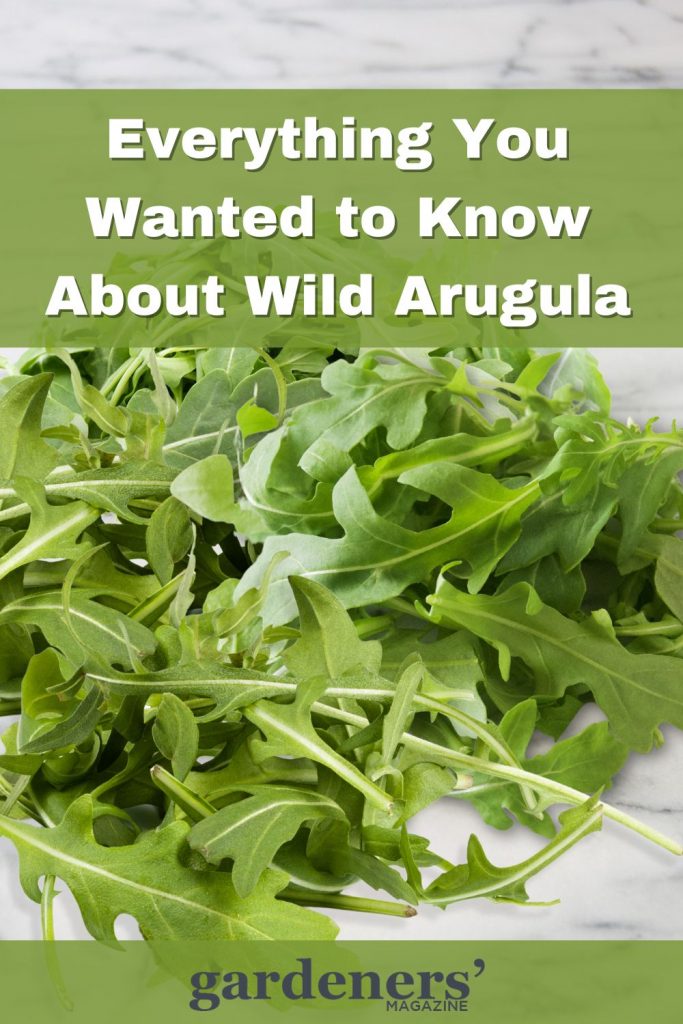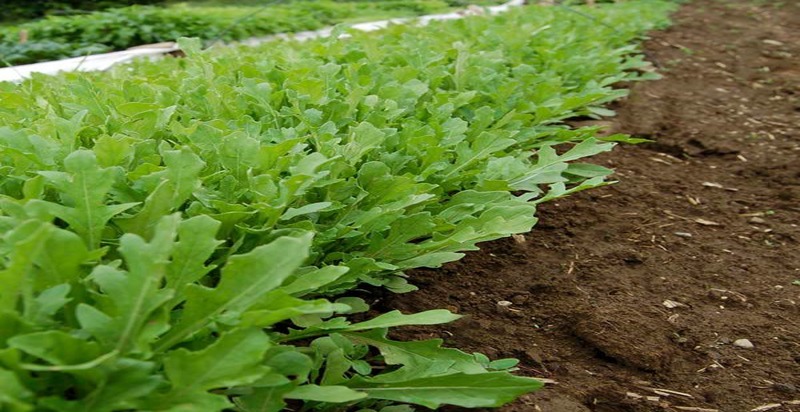Wild arugula, also known as Diplotaxis tenuifolia or wild rocket, is one of the most intriguing leafy greens. Its distinct flavor may not be appealing to everyone, but those who enjoy it value its boldness and nutty bitterness. With its sharp, peppery taste, it makes a perfect addition to salads or stir-fries. Wild arugula is easy to grow and once established, it will return year after year. This guide will provide all the information you need about growing, harvesting, and using wild arugula in the kitchen.
About Wild Arugula:
Wild arugula, scientifically known as Diplotaxis tenuifolia, is a Brassicaceae (mustard) family member. It looks similar to cultivated Arugula. However, it has broader leaves, and its flavor is more intense and nutty. Native to the Mediterranean region, it can be found in many parts of the world today.
Wild arugula is a wild plant that grows naturally without planting or farming. It is commonly found in fields and along roadsides but can grow in most gardens in sunny spots. Wild arugula has become increasingly popular over the past few years and can often be found at local farmer’s markets.
History and Origin of Wild Arugula:
Wild arugula is native to the Mediterranean region and has been used in cooking for centuries. The earliest recorded use of wild arugula can be traced back to ancient Greek and Roman recipes, where it was used to make pesto, salads, and soups. Its popularity continued into the Middle Ages when it began to be cultivated in gardens throughout Europe.
During the 16th century, wild arugula was introduced to North America by colonial settlers. They quickly adopted it into their culinary repertoire, and soon, it became a popular ingredient in soups and salads.
Wild arugula has become increasingly popular among home gardeners in recent years due to its robust flavor and easy-growing requirements. Its popularity continues to grow worldwide as chefs, farmers, and home cooks explore its many culinary uses.
Description of Wild Arugula
Wild arugula is a hardy and easy-to-grow plant that can reach heights up to two feet (60 cm). Its leaves are typically broad, oval, and tooth-like in shape. The leaves have a nutty flavor with hints of pepper. Wild arugula also produces small white flowers during the summer months.
When selecting wild arugula, look for fresh, green leaves with no signs of yellowing. Freshly harvested arugula will have a strong, peppery flavor and can be used in salads or cooked dishes. It is best when consumed within two days of harvesting.

The Flavor Profile of Wild Arugula
Wild arugula has a unique flavor profile that is both nutty and peppery. The leaves taste slightly bitter, with hints of garlic, lemon, and pepper. The flavor intensifies when the leaves are cooked or roasted, making it a great addition to soups, salads, pizza toppings, pasta sauces, and more.
The peppery flavor of wild arugula pairs well with acidic ingredients such as tomatoes, lemons, and limes. It can also be used to balance out the sweetness of fruits like mangoes or peaches. For a unique twist on pizza or pasta, try adding wild arugula and your favorite toppings for an added layer of flavor.
Seasonality and Availability Throughout the Year of Wild Arugula:
Wild arugula is usually available year-round, with its peak season being spring and summer. The leaves are crispier during this time, making them a great addition to salads and sandwiches. For an extra spicy kick, consider harvesting wild arugula during the late summer or early fall months when the leaves are most robust.
Health Benefits of Wild Arugula
Wild arugula is rich in vitamins and minerals, making it a healthy addition to any diet. It contains high levels of antioxidants that help protect the body from free radicals and oxidative stress. Additionally, Wild arugula is an excellent source of dietary fiber, which can help promote regularity and reduce cholesterol levels. The leaves also contain Vitamin K, which helps with bone health and blood clotting. Finally, Wild arugula is low in calories and fat, making it an ideal addition to any weight loss diet.
Cultivation of the Wild Arugula
Cultivating Wild arugula is quite simple and requires minimal effort. The plant can be grown in various soils but prefers loamy soil with plenty of organic matter for best results. Additionally, it should be planted in an area where it will receive full sunlight throughout the day. Watering the plant regularly is key to its success; allowing the soil to become too dry can result in stunted growth and wilting of the leaves.
Wild arugula requires little maintenance, although removing any weeds or competing plants that might crowd the area is important. The leaves should be harvested when they reach a height of 10-15 cm, as this is when they are most flavorful. Removing any flowering stalks is recommended, as this will encourage more leafy growth. Finally, Wild arugula can be harvested for seed to plant a new crop the following year.
Harvesting of Wild Arugula
Wild arugula is ready to harvest when the leaves are 10-15 cm long. Depending on soil and environmental conditions, this will be approximately 2-3 weeks after planting. Care should be taken when harvesting Wild arugula, as the delicate leaves can bruise easily. It is best to use a sharp pair of scissors or clippers to cut the stems.
Leaves are best harvested in the morning, at their most flavorful. Additionally, Wild arugula flowers should be removed to encourage more leafy growth. Once harvested, Wild arugula can be used immediately or stored in the refrigerator for up to four days. To maintain its freshness and flavor, storing Wild arugula in a container or plastic bag with a damp paper towel is best.
When harvesting Wild arugula, leaving at least some of the plant intact is important. This will allow for more regrowth and multiple harvests throughout the season. If desired, the seed heads can be harvested for replanting next year. To do this, cut the flower stalks and hang them upside down in a cool, dark place. Once the seed heads are dry, they can be easily collected by hand or with a sieve.
Seasonability and Availability of Wild Arugula:
Wild arugula is a popular crop in many parts of Europe and North America. It grows well in USDA hardiness zones 3-9 in the United States and is especially suited to climates with mild winters and cool springs. It can also be grown as a fall crop in warm climates and is commonly cultivated in California, Texas, Virginia, Florida, Pennsylvania, and New York.
Other areas where Wild arugula thrives include much of the Mediterranean region, including Italy, Spain, France, and Greece. In South America, it grows well in Argentina and Chile. Wild arugula has been grown in Asia, India, Pakistan, and China. It is also established in the Middle East, including Israel, Jordan, Iraq, and Saudi Arabia.
What are the Things to Remember When Buying Wild Arugula?
When purchasing Wild arugula, looking for fresh-looking leaves with no visible signs of wilting or discoloration is important. The plant should also have a strong aroma that is slightly peppery and earthy. When selecting pre-packaged Wild arugula, make sure there are no signs of mold or insect damage.
Certainly! Here’s the revised text:It is crucial to check the expiration date before making a purchase. Wild arugula has a short shelf life and should be used promptly for optimal results. When stored correctly, it can last up to five days in the fridge, but it will begin to wilt and lose flavor afterward.

Storage Methods of Wild Arugula:
Wild arugula should be stored in the refrigerator in a loosely sealed container or plastic bag. Be sure to wash and dry it thoroughly before storing as any moisture can cause it to spoil quickly. It is also important to keep Wild arugula away from fruits and vegetables with strong odors, such as garlic or onions, as this can affect flavor.
When freezing Wild arugula, it should be blanched first to preserve its flavor and texture. Submerge the leaves in boiling water for a few seconds before transferring them to an ice bath. Once cooled, drain and dry the leaves thoroughly before storing them in an air-tight container or bag. This will help keep the Wild arugula fresh and flavorful for up to six months.
Uses of Wild Arugula with Other Fruits and Vegetables:
Wild arugula can be a flavorful addition to salads, sandwiches, and other dishes. It pairs well with fruits such as strawberries, pears, and apples. Its mild flavor complements vegetables such as cucumbers, tomatoes, and bell peppers. Toasted nuts like walnuts or pecans provide a nice crunchy contrast to its slightly bitter flavor.
Wild arugula can also be cooked and wilted in salads, soups, and pasta dishes for a robust flavor. It can even be blended with other herbs, such as oregano or thyme, to create unique sauces and dressings. With its vibrant green color and peppery taste, Wild Arugula is the perfect ingredient to add a punch of flavor to just about any dish.
Conclusion
Wild Arugula is a flavorful and nutritious green vegetable and an incredibly versatile ingredient. Its mild flavor pairs well with various fruits and vegetables, making it the perfect addition to salads, sandwiches, soups, portions of pasta, sauces and more. You can keep Wild Arugula fresh and flavorful for up to six months with proper storage techniques such as refrigeration or freezing. So go ahead and add some Wild Arugula to your next meal – you won’t regret it!
- Everything You Wanted to Know About Red Tamarillos - June 2, 2025
- A Guide to Tulips: Everything You Need to Know & More… - June 2, 2025
- Guanabana: Description, Flavor, Benefits, And Uses - May 27, 2025

1 thought on “Everything You Wanted to Know About Wild Arugula”
Comments are closed.